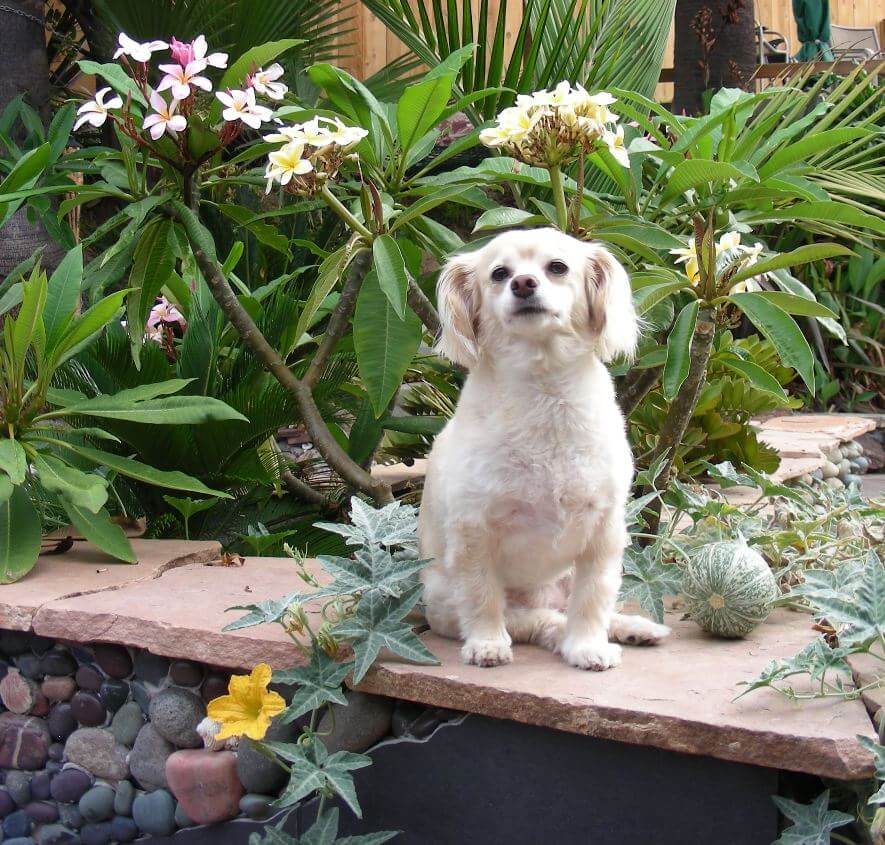Dr. Turenne is certified in hospice and palliative care and is prepared to not only assess these signs and behaviors but also help you to understand how they may apply to your pet’s quality of life. See Dr. Turenne’s Quality of Life Journal.
Learn More About Dr. Turenne
Is your pet in pain?
These signs of pain are fairly obvious and most pet parents can determine that there is discomfort present:
- Limping
- Wanting to turn around on walks sooner than usual
- Walking more slowly on walks, more stiffly or gingerly
- Not able to jump on the furniture or counters anymore, or perhaps not as easily;
You may notice you have to coax them up and see them actually have to do a “start, stop” in order to finally get up the gumption to make the leap.
These signs of pain are not as obvious and can be mistaken for other conditions:
- Hunching their backs
- Licking themselves anywhere on their bodies but particularly on their front feet
- Drooling
- Decreased appetite
- Constipation (because it hurts to get in the position to defecate)
- Inappropriate elimination
- Pacing
- Panting
- Inability to sleep
Is your pet nauseous?
Nausea affects many pets as they age, particularly those that have terminal illnesses. Often it can be hard to differentiate when your pet is just being “picky” vs really feeling ill/nauseated. These are some signs that indicate possible nausea and are indications for seeking guidance from a veterinarian.
- Decreased appetite
- No appetite
- Drooling
- Looking at the food and then looking at you
- Walking into the kitchen as if interested and then walking out
- Putting the food in their mouths and then spitting it out
- Licking themselves or objects (carpets, furniture, etc…)
Constipation
Constipation affects our older pets frequently and sometimes, it is not readily apparent that they are having difficulty. Here are a few signs to watch for and seek veterinary attention if they occur:
- Decreased bowel movements
- Bowel movements that are smaller, harder or look like round pellets
- Straining to defecate – they posture but nothing happens
- Vomiting
- Decreased appetite
- Bloated abdomen
- Drooling
Anxiety
Many pet parents are surprised that their pets who have never showed any problems with anxiety, suddenly become anxious about things that were never a concern in the past. This is a common finding among older pets and these are some signs that anxiety might be affecting your companion.
- Pacing, restlessness
- Change in behavior towards you – either more clingy or sometimes less clingy
- Inappropriate Urination
- Panting
- Drooling
- Increase or decrease in vocalization
- Destructive behavior – chewing, scratching, biting, tearing, destroying objects or furniture
- Licking themselves anywhere on their bodies, particularly one specific area, leading to sore(s).
- Chronically licking the rug, floor or furniture
This information, combined with the history and the physical examination will help Dr. Turenne guide you on the right path to help improve your pet’s comfort and quality of life.
Please call us at 734-385-7161 to determine if you are in our service area. If you are not, Dr. Turenne also offers hospice and end of life phone consultations.
